The Krauss Rolette Luxus got my attention twofold: it’s an exceedingly beautiful piece of machinery from the days of yore, and because it is related to the photographic past of Romania, of which little is known.
The back of the camera bears the metal elements to support the film advancing red window, and on that metallic element an engraving reads “Optic Photo Recta Timisoara”. For those of you who do not know where or what Timisoara is, you are hereby advised to call your friend Google on his private number. Or, I can tell you right now that Timisoara is one of the largest cities in Romania, on its western side. Read more about this beautiful city and its very interesting history here. There, you have just been educated.
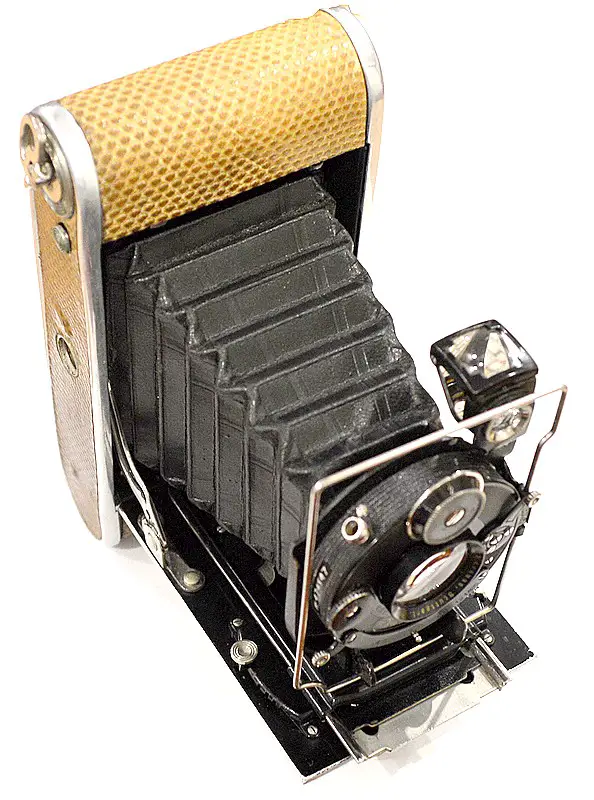
The story of RECTA TIMISOARA is almost unknown, probably because its existence was lived locally and has not enjoyed a nationwide reputation. But what reputation it had, was thoroughly acknowledged in Timisoara; that we know for certain.
Although the founders or last owners are both unknown to me (as much as I have looked for this), I can tell with a comfortable degree of certainty that RECTA was a local brand, with a business focus on photographic, sporting and optic goods, and was active (I believe) from the turn of the 20th century until the late 40’s, when the communist regime decided to nationalize (read confiscate) the entire private business sector in the fast communization of Romania.

Anyways, we know RECTA was in direct business relations with Western Europe’s best manufacturers of such goods as cameras, film, chemicals and photographic paper. Proof lies in a catalogue printed by RECTA TIMISOARA in 1930, named “Foto Bedarf”, presenting the latest from Kodak AG , i.e. cameras and stuff. This goes to show that Kodak at least was on their business run, certainly others probably too.
Shops aside, the company apparently run a photo studio in Timisoara as well, a city which incidentally had a large number of German-speaking population at the time. It still does, but I suspect not as many as it used to a 100 yrs ago. I am certain that the multi-ethnicity of Timisoara brought a lot of Western businesses in that era.
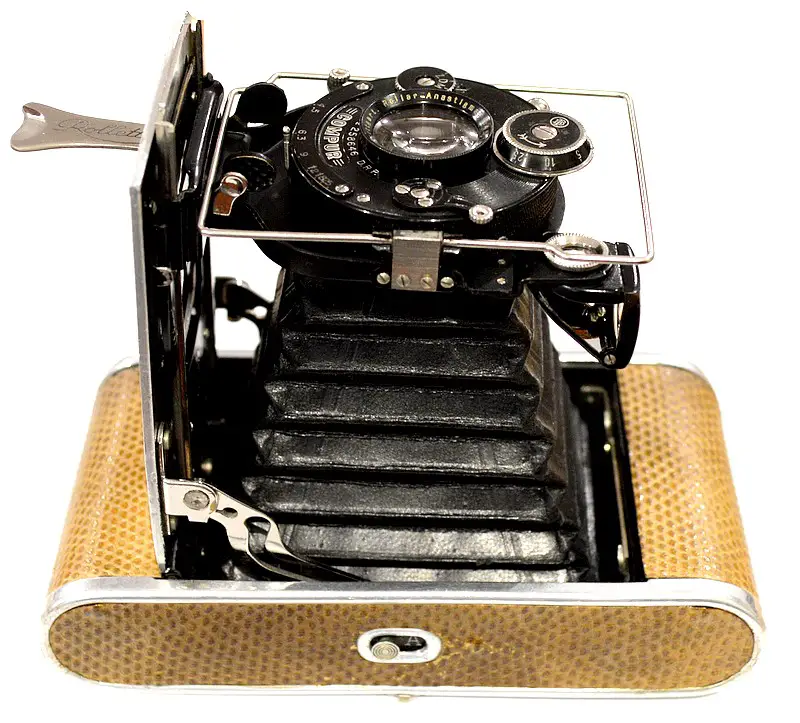
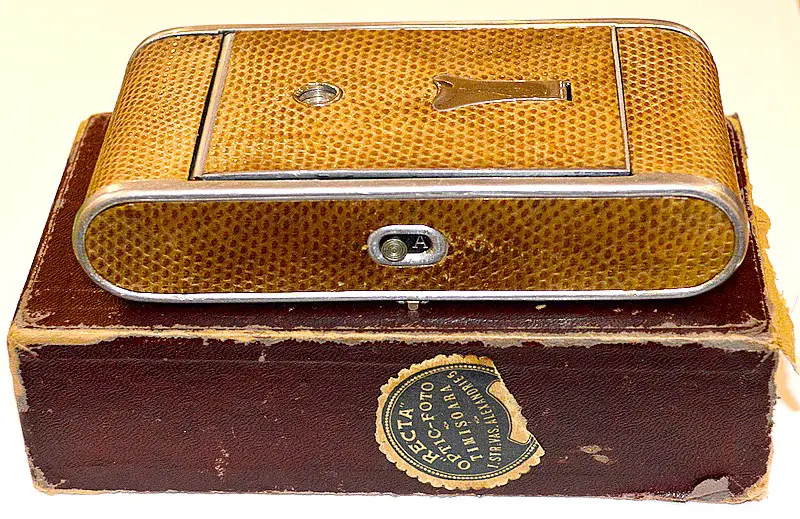
The Krauss Rollette Luxus is a camera produced by the German company G.A. Krauss, founded in 1895 by Gustav Adolf Krauss in Stuttgart. It was a company trading and manufacturing photographic goods.
This particular model was produced in or around 1925, and although there are no serial number catalogues, the number affixed on the shutter housing – 474147 puts it around the year aforementioned, by comparison with other similar items and known period of manufacture (only 10 yrs, between 1924 and 1934).
The Rollette shoots a 5×7.5 frame, on the long gone 129 film negative; it is made from what appears to be aluminium or something resembling to it. This particular camera is covered in ostrich or snake skin, showing a beautiful patina of beige/yellowish shade.
The lens is a generous G. A. Krauss Stuttgart Rollar – Anastigmat 1:4,5 f = 8 cm, and the shutter is a COMPUR with speeds ranging from 1, 2, 5, 10, 25, 50, 100 and 300th of a second. Apertures are 4.5, 6.3, 9, 12, 18 and 25, which goes to show that the care for good images was really high.
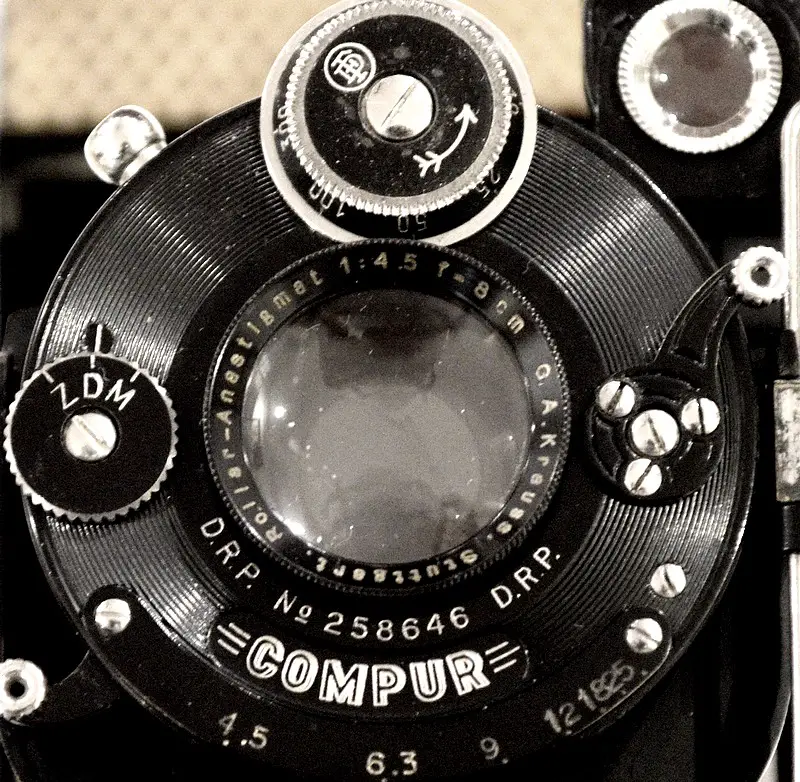
The camera is a viewfinder one, with a mobile periscope-type of a viewer; it has two positions, landscape and portrait, and on this camera the viewer is like new, very clear, no clouding or oxidation.
This camera has a very interesting way of focusing, by advancing the lens housing, sliding onto the rails running on the front plate, helped by a semi-circular lever: push the lever towards the lens and the housing advances, extending the bellows in the same time. Not unlike other cameras (Mamiya RB, macro bellows, etc).
Reverse the lever, the bellows moves toward the backplate. The lever is coupled with a distance gauge needle, located on the opposite side of the advancing lever: one has only to approximate the distance, and push the right side lever (lens towards the subject), until the left side needle coincides with the distance chosen.
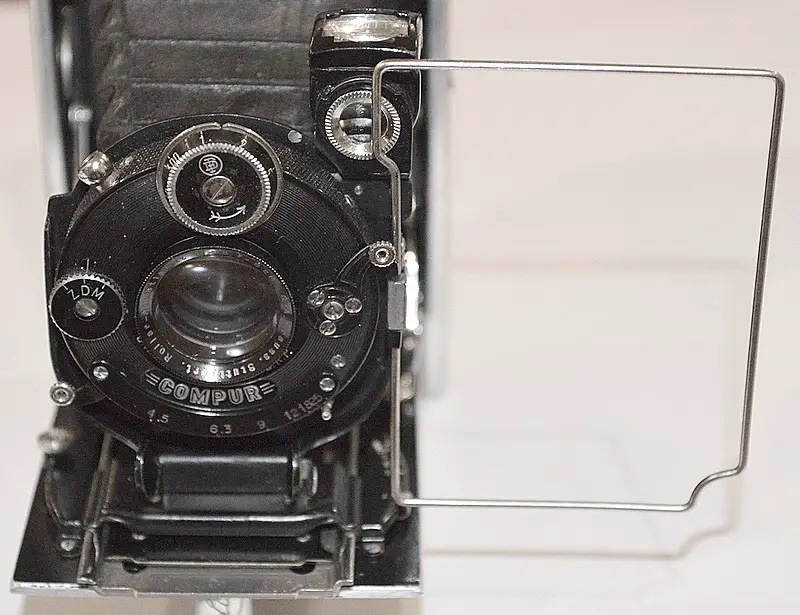
A “sport” or “wire viewer”, as they were called back in the day, is attached onto the lens / shutter housing. It is actually hinged onto the housing, so to use it one has only to push onto the outside of the camera. It is rectangular and it coincide with the landscape/portrait view types.
Advancing the film is done by means of a ring key, and it works in the same manner as any other old camera would. Turning the key advances the film, one checks for the right number of the film backing paper, via a red window. The lens housing is also fitted with a release cable port.
Anyways, a very beautiful thing to behold, this camera. Thank you for reading !
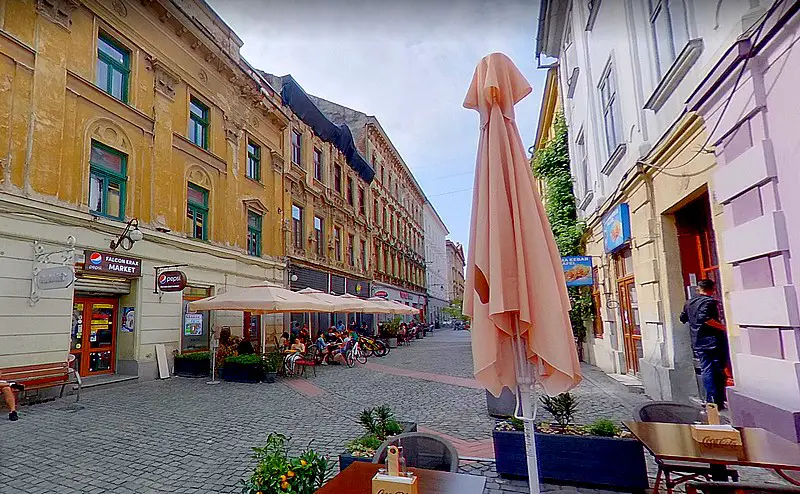
This is where the RECTA company once resided, 100 years ago: 5 Vas. Alexandri, Timisoara.
If walls could talk…
Share this post:
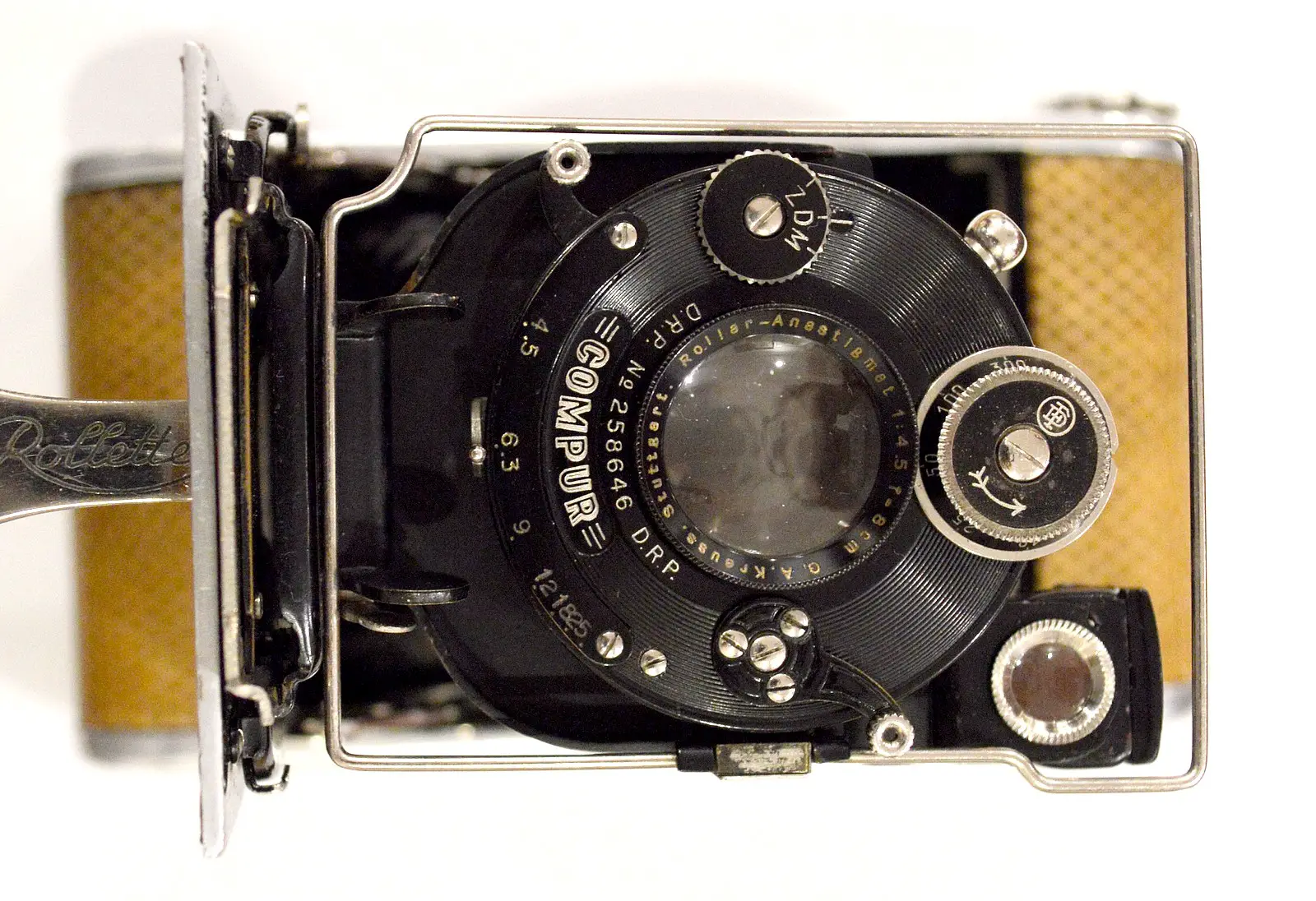
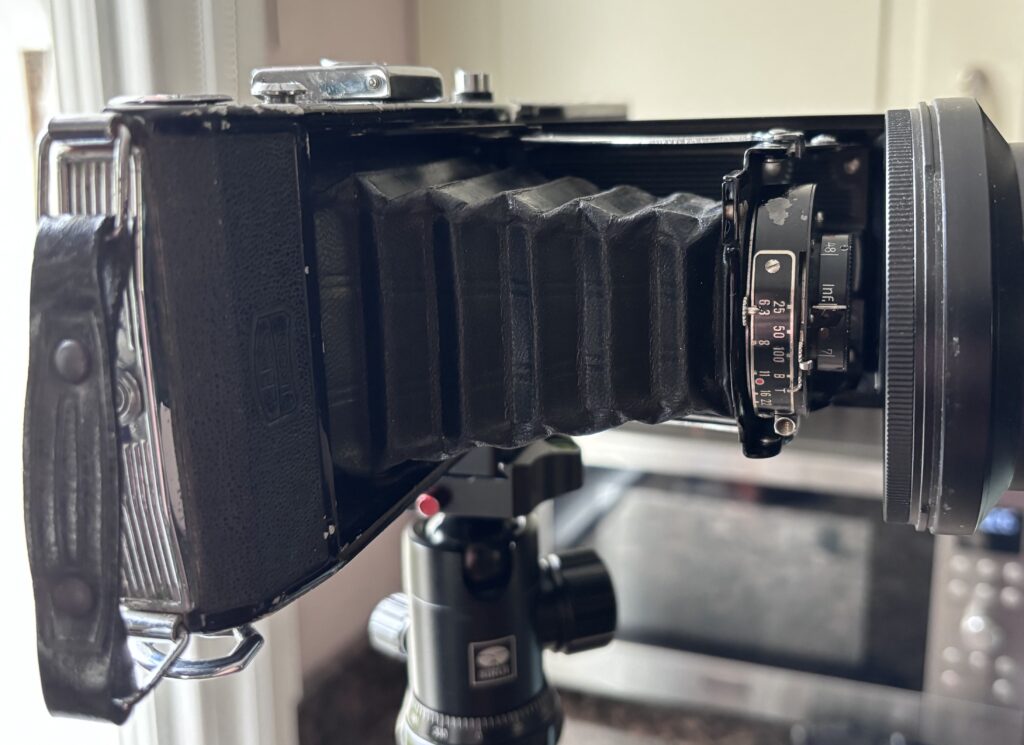
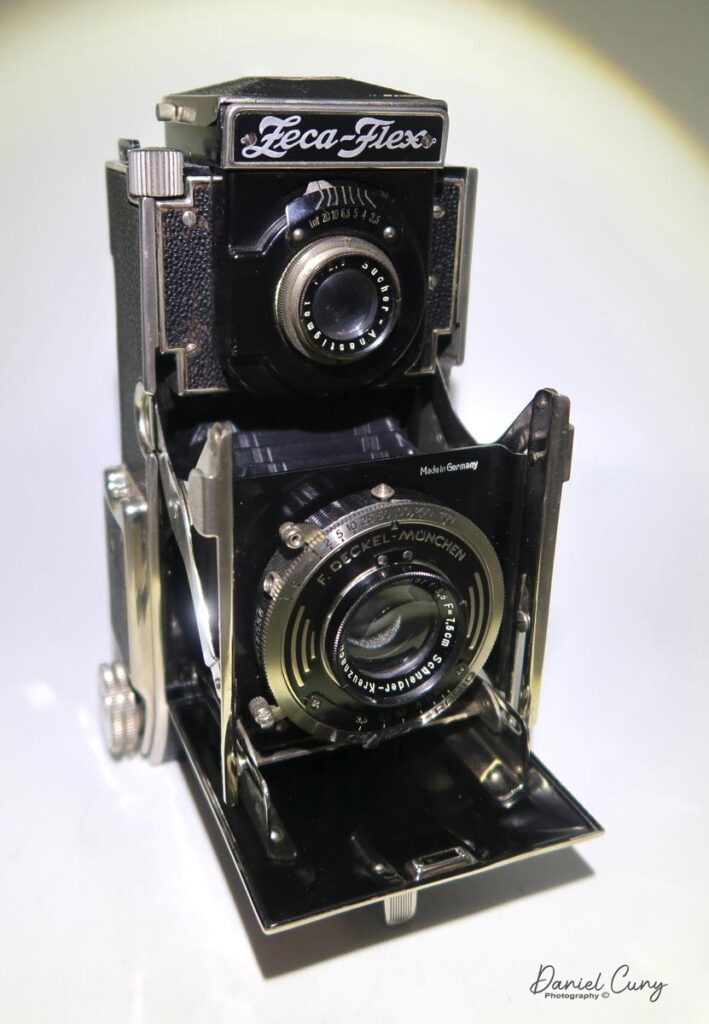
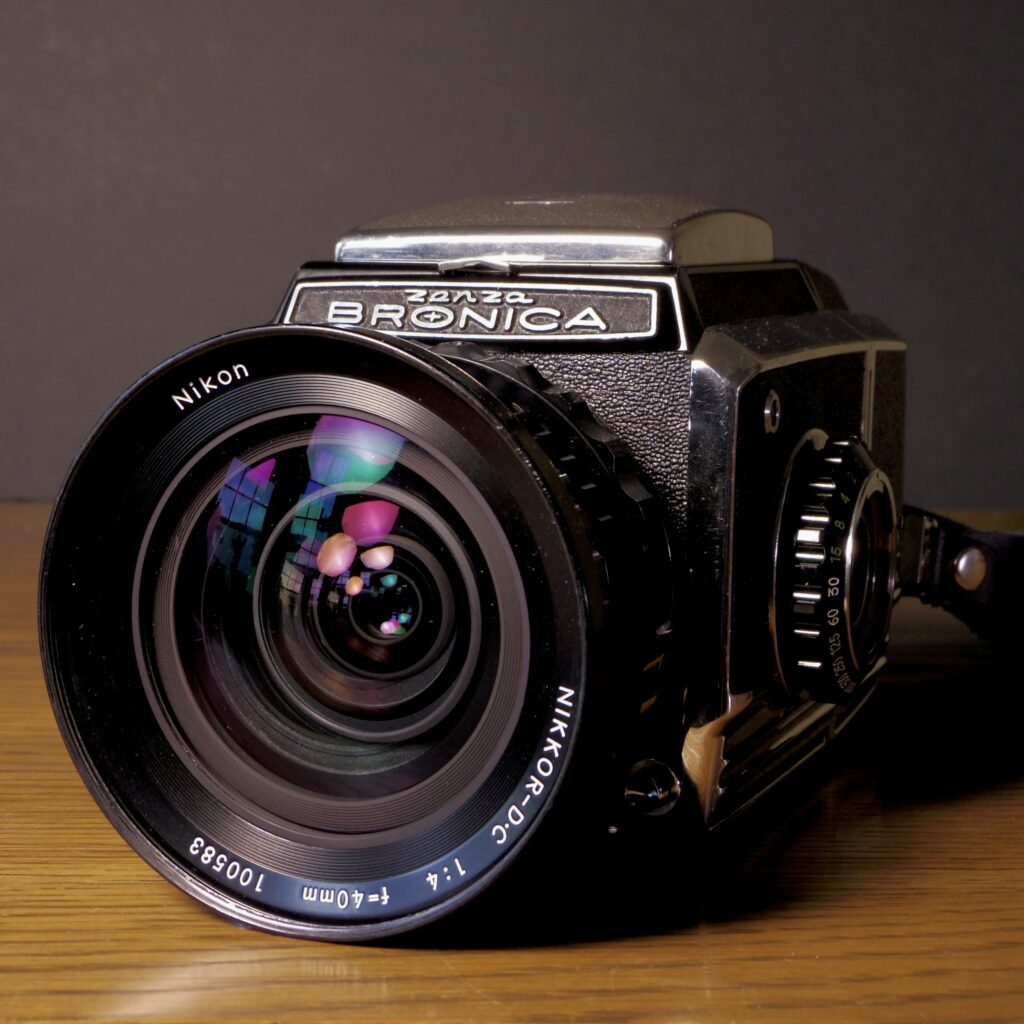





Comments
jeffery luhn on Krauss Rolette Luxus – an old timer’s story
Comment posted: 09/04/2024
Gary Smith on Krauss Rolette Luxus – an old timer’s story
Comment posted: 09/04/2024
Comment posted: 09/04/2024
Comment posted: 09/04/2024
Julian Tanase on Krauss Rolette Luxus – an old timer’s story
Comment posted: 09/04/2024
Geoff Chaplin on Krauss Rolette Luxus – an old timer’s story
Comment posted: 09/04/2024